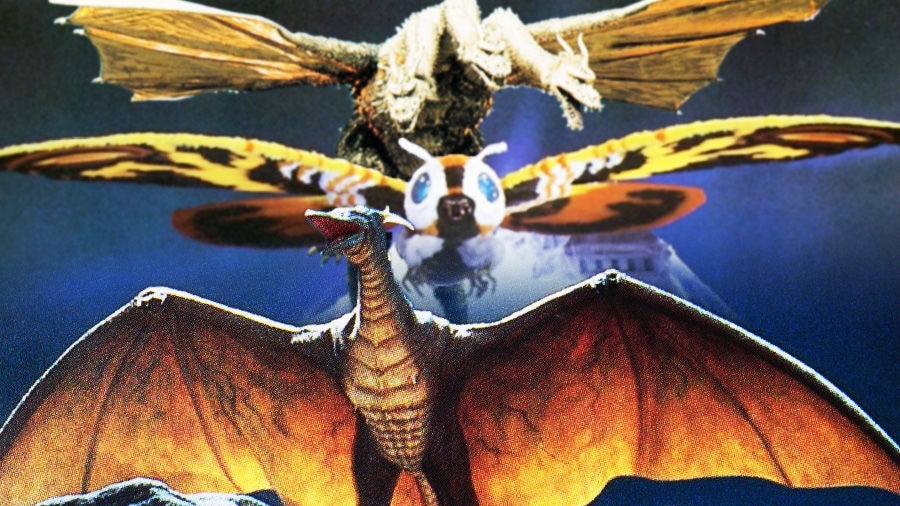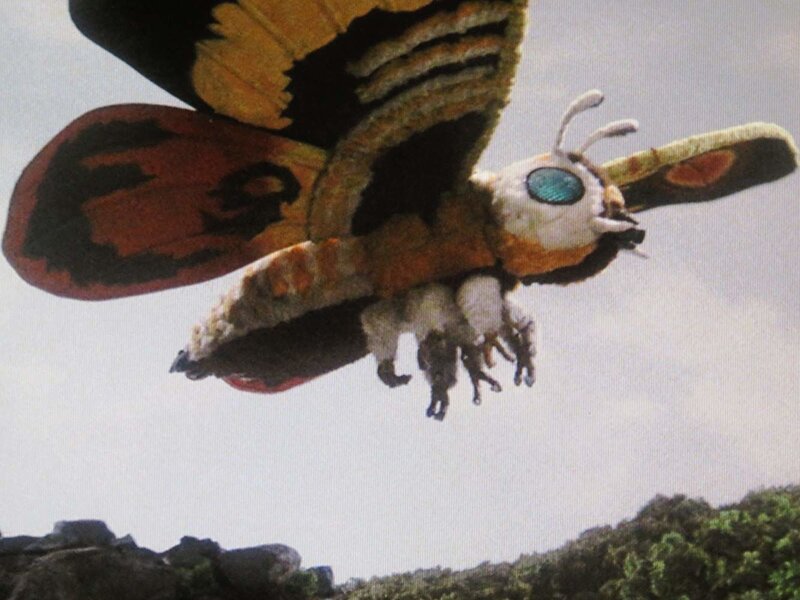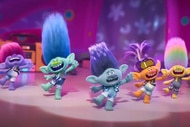Create a free profile to get unlimited access to exclusive videos, sweepstakes, and more!
Science Behind the Fiction: Godzilla's most realistic nemeses, ranked

Making a movie that will be remembered not just when award season rolls around, be it years or decades later, requires a perfect mix of creativity, craft, foresight, and serendipity. It's strange creative alchemy, equal parts science and necromancy, which very few people have ever pulled off. The good people at Toho Studios in Japan created a whole world of them, starting with Godzilla.
Godzilla is so iconic it's the sort of idea that lives in your mind as if it sprang up of its own accord. It's likely you don't remember when you first encountered him. You've always known. It's the type of character, a symbol of monsters everywhere, that defies creation and simply demands to exist. Of course, there is a Godzilla, there always has been, and always will be.
So quintessential is he that his name has become a descriptor, a suffix for describing things that are exceedingly large or unruly.
Godzilla is a modern myth, but his origins are all too real.
The nuclear age was in its infancy, worries about the long-term impact of atomic blasts were on everyone's collective minds, and nowhere was that more keenly felt than in Japan. The carnage unleashed upon the people of Hiroshima and Nagasaki during World War II was fresh, and nuclear testing was ongoing.
The board was set, but the final element came into play on March 1, 1954, when the crew of the Daigo Fukuryū Maru, a tuna fishing boat, was contaminated by nuclear fallout after a thermonuclear test near Bikini Atoll.
It's easy, in retrospect, to see how Godzilla came into being, a walking metaphor for the destructive power of nuclear weapons.
In the 65 years since he first walked on screen, little has changed. Nuclear weapons haven't been used in aggression for decades, but the specter still hangs over all of us. So it's only fitting that as long as the threat still looms, Godzilla lives on as a reminder of our hubris. And, just as we hope to dismantle our bombs and rid the world of their destructive potential, so too has Godzilla been fought, tooth, nail, and wing by a gallery of foes.
In celebration of Godzilla's ongoing legacy 65 years down the line, we wonder if those enemies are any more realistic than our talks of global disarmament.
KING GHIDORAH
It's hard to imagine a kaiju any cooler than Ghidora (other than Godzilla, of course). With three heads, two tails, and wings, he's a veritable cornucopia of awesome. Over the course of the franchise, the details surrounding Ghidora have shifted. At one time or another, he's been said to be an alien dragon, a genetically engineered monstrosity from the future, or an inter-dimensional god. Wherever he's from, he has only one task in mind: smashing Godzilla to a scaly pulp. Oh, and world domination.
In terms of whether something like Ghidora could exist, there are at least a few hurdles. Above all else is his size. We've covered this before, but we'll briefly recap here.
Animals on Earth can only get so big. Putting aside the environmental requirements necessary to sustain a breeding population of any large animal, they've got gravity working against them.
Animals can't just scale indefinitely; it's why you don't see giant insects or skyscraper-scaling apes.
As you scale an animal up, its volume is cubed, but the cross-section of its muscles and bones is only squared. In short, at a certain point, any animal can no longer support its own weight. If King Ghidorah materialized in all his gigantic splendor here on Earth, he would almost certainly collapse into a pile of cold-blooded mashed potatoes.
For the sake of argument, and of fun, let's assume size isn't a factor. Maybe he is genetically modified. Maybe his muscles and bones are reinforced. Or maybe he constantly flaps his wings to take off some of the strain. Or maybe we scale him down to a more reasonable size. Could such a creature exist?
Wings are a no-brainer. We know those exist, and we know winged reptiles existed in the past. There are no evolutionary or biological barriers to flying reptiles. Check!
There are, likewise, no barriers to animals with multiple heads or more than one tail.
Polycephaly is the name given to animals born with more than one head. Of these, two-headed creatures are most common, though still rare. But three-headed animals have been documented. That's another box checked for Ghidorah. Moreover, polycephaly is most commonly seen in reptiles. Multiple tails have also been documented. Taking all of this into account, it's not impossible to imagine an ancient flying reptile who, at one extreme of the genetic lottery, was born with three heads and two tails.
Somewhere in the expanse of time, it's possible a real-life Ghidora once roamed the Earth.
MOTHRA
The flying savior of Japan, Mothra is one of the most recognizable of all kaiju, in terms of real-world equivalents. Godzilla's name (Gojira) was derived in part from the word "kujira," meaning whale, a reference to his size. Mothra's name is derived from adding the same suffix, "-ra," to moth. In short, she's a gigantic moth. Mothra.
Gigantic is probably an understatement. There's no definitive answer as to Mothra's size, but suffice it to say she dwarfs any other moths native to Earth.
Unlike Ghidora, Mothra goes through every stage of development on Earth, meaning the planet has to sustain her for more than the duration of a few admittedly kick-ass fight scenes.
Based on estimates of her size, the larval stage of Mothra is estimated at somewhere between 10,000 and 15,000 tons and would require two to three million tons of vegetation before she was ready to metamorphose.
Such a vast size might be a benefit in terms of defense, as she could easily roll over and crush anything that came to call. But it also throws any attempts at camouflage right out the window.
The most readily available place for the vegetation she would need to grow is the Amazon rainforest. But there she'd be at the mercy of all the little crawling things with their teeth and stingers. Not to mention the risk of human interlopers hoping to cash in on all the sweet, sweet silk she'd produce when building a cocoon.
Mothra might come here to defend us from Godzilla, but she'd probably be better served defending herself from us.
Once again, if we're willing to throw the square-cube law in the trash bin, there's no biological reason Mothra couldn't exist. She is, after all, just a moth. But the environment on Earth simply isn't suited for something so large to go undefended.
RODAN
Undoubtedly the most realistic of the enemies in Godzilla's Rolodex, Rodan is simply a gigantic angry pterosaur. In fact, the name was originally Radon, a shortening of pteranodon (with a few letters removed), but it was changed when the character came to the States in order to avoid confusion with the chemical element.
Unlike other kaiju whose origins exist in a state of relative mystery, Rodan was intended to be exactly what he looks like: a pterosaur revived from antiquity.
The largest hurdle Rodan has to cross in the race for most realistic kaiju is, once again, size.
If we're being conservative, based on the many versions of Rodan, we're looking at an animal 50 meters tall with a 120-meter wingspan.
There's simply no known pterosaur that boasts those kinds of numbers. In fact, that puts Rodan at an order of magnitude larger than the largest known pterosaur.
The recently discovered "Dracula," a pterosaur specimen found in Romania's Transylvania region, boasts an estimated 3.5 meters in height and a 12-meter wingspan (based on reconstructions).
Scientists are unsure whether an animal of that size would even be capable of flight, to say nothing of something as massive as Rodan.
If we ever hope to see real kaiju roaming the Earth, engaged in an epic battle (don't judge our desires), we very probably are going to need to scale back. Which is appropriate, because that's more or less what Godzilla has been telling us for the last 65 years.















